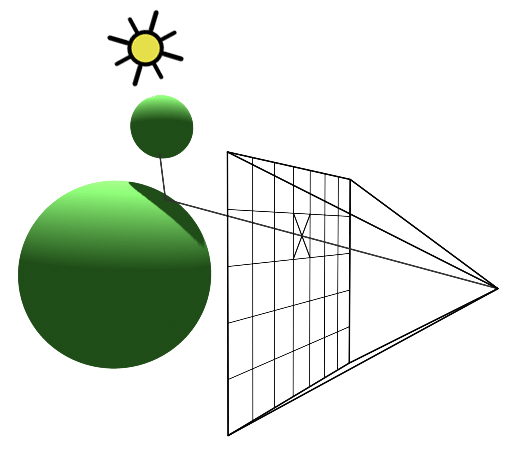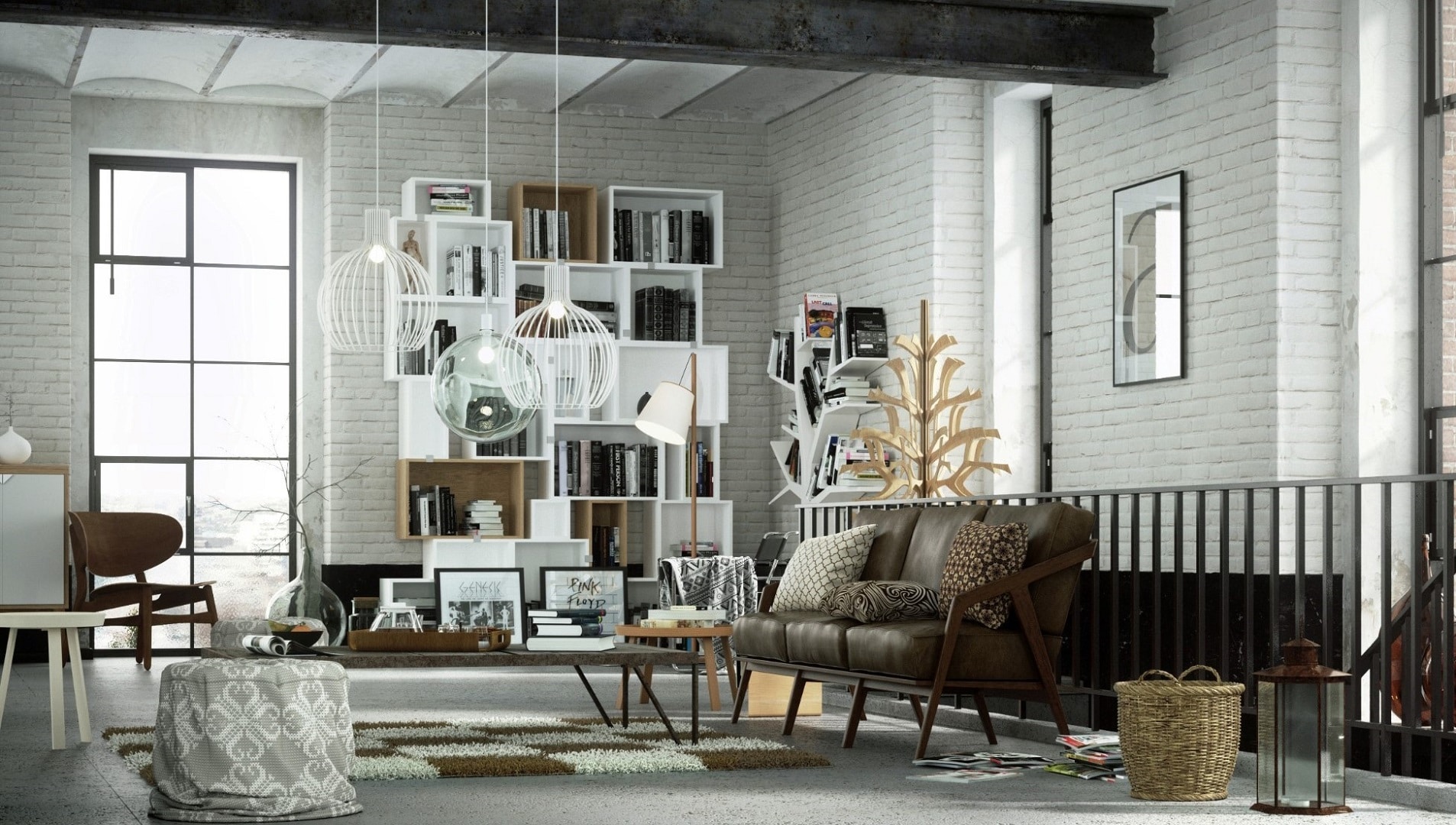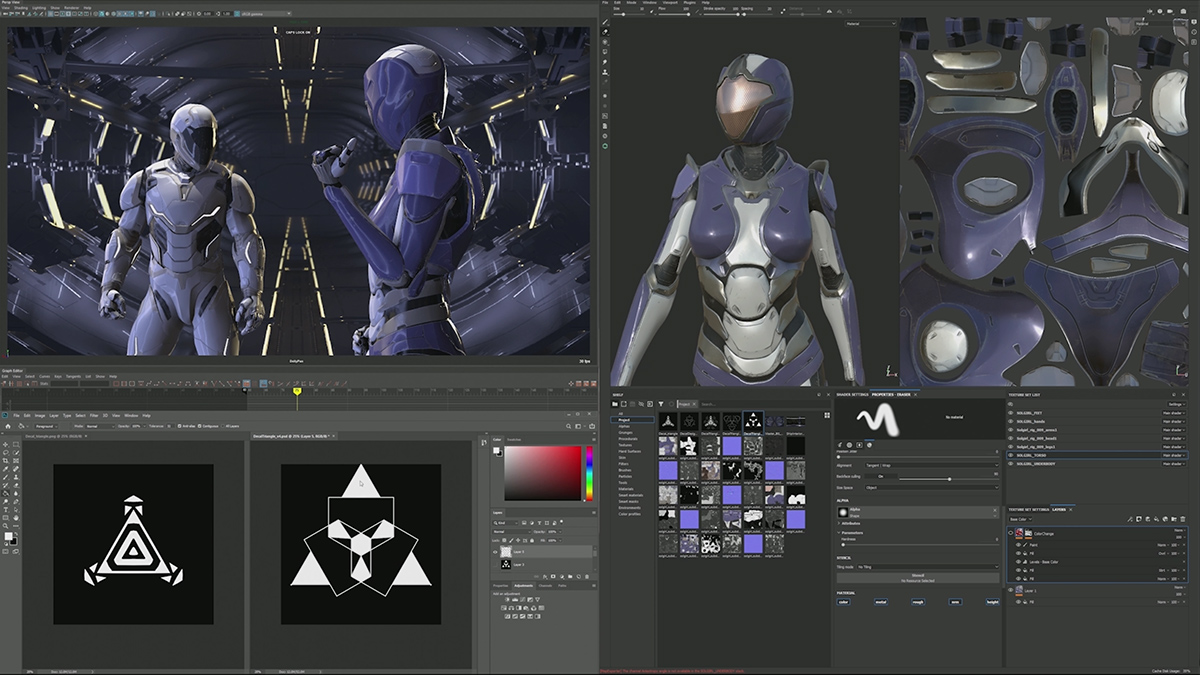Rendering
What are the Advantages of Ray Tracing for Photorealistic Rendering?
Ray tracing is a rendering technique that is rapidly becoming a critical part of the gaming industry. It simulates light by following the path of individual photons, thereby creating incredibly realistic images. This technique provides photorealistic visuals through its accurate depiction of shadows, reflections, and lighting effects. With each passing year, ray tracing continues to develop as hardware and software advancements make it more accessible to gamers everywhere. In this blog post, we'll explore the advantages of ray tracing for photorealistic rendering and why it's worth investing in as a technology.
- 1. Realistic simulation of light transport
- 2. Tracing the path of light for accurate color reflection
- 3. Building shadows from small and thin objects
- 4. More reflections on key areas
- 5. Produces photorealistic graphics
- 6. Used for rendering difficult areas or objects in a scene
- 7. Extremely realistic 3D rendering technique
- 8. Ideal for architects, designers, and 3D artists
- 9. Real-time ray-traced graphics have been a long-time dream
- 10. Enables exploration and interaction with lifelike 3D models
1. Realistic simulation of light transport
As a 3D artist, I know that lighting is a crucial aspect of photorealistic rendering. This is where ray tracing truly shines, as it can simulate realistic light transport in a scene. With accurate tracing of the path of light, ray tracing can provide accurate color reflection and build shadows from even small and thin objects. This, coupled with more reflections in key areas, results in extremely realistic 3D rendering techniques, making it ideal for architects, designers, and 3D artists. With real-time ray-traced graphics, we can finally explore and interact with lifelike 3D models, a long-awaited dream.

2. Tracing the path of light for accurate color reflection
As mentioned in the previous section, ray tracing can accurately trace the path of light, enabling realistic color reflection in photorealistic rendering. This technique is especially important in achieving accurate reflection and refraction, which is crucial when rendering highly detailed scenes. With ray tracing, each ray of light is tracked back to its source, allowing for precise computations of reflection angles and illuminations. This results in accurate and lifelike color reflections, even in complex scenes. Additionally, ray tracing can be used to simulate a wide range of optical phenomena, including soft shadows, depth-of-field, and motion blur. With its ability to simulate light transport in a highly realistic manner, ray tracing has become an essential tool for architects, designers, and 3D artists who require highly accurate representations of their work.

3. Building shadows from small and thin objects
Another benefit of ray tracing for photorealistic rendering is its ability to accurately build shadows for small and thin objects. Unlike other rendering techniques that have limited resolution, ray tracing can create incredibly subtle, smooth, and diffuse shadows without any limitations. This is because ray tracing can simulate a variety of optical effects, such as reflection, refraction, soft shadows, scattering, depth of field, and motion blur, making it an ideal choice for architects, designers, and 3D artists looking to achieve the highest level of photorealism. By accurately tracing the path of light, ray-tracing programs such as V-ray and global illumination can cast shadows that are true to reality and occlude other objects, allowing for a more realistic portrayal of the scene. The combination of these features results in an extremely realistic 3D rendering technique that is perfect for rendering difficult areas or objects in a scene, ensuring that every detail is captured with accuracy and precision.

4. More reflections on key areas
One of the key advantages of ray tracing for photorealistic rendering is the ability to produce more reflections in key areas. With ray tracing, a vast number of light rays can be traced and manipulated to create accurate and realistic reflections across a surface. This level of precision is ideal for creating lifelike images of intricate designs or objects with complex geometries. Ray tracing can also simulate the reflective properties of various materials, such as metals or glass, adding even more depth and detail to a rendered image. For architects, designers, and 3D artists, this allows them to approach each project with a heightened sense of realism and accuracy, ultimately leading to more engaging, convincing visual representations. Additionally, in real-time applications like gaming, ray-traced reflections can be used to create immersive environments that react dynamically to the player's movements and actions. Overall, the more reflections produced through ray tracing, the more lifelike and engaging the final product can become.

5. Produces photorealistic graphics
As a 3D rendering technique, ray tracing is known for producing incredibly realistic and photorealistic graphics. This is because it accurately simulates the way light behaves in real life, resulting in shadows, reflections, and color variations that look just like they would in the real world. Additionally, tracing the path of light ensures that colors are accurately reflected, making the final image even more realistic. Another advantage of ray tracing is its ability to build shadows from small and thin objects, adding even more depth and dimensionality to a scene. Ray tracing also enables more reflections to be rendered in key areas, resulting in even more realistic visuals. Overall, ray tracing is an ideal technique for architects, designers, and 3D artists seeking to create lifelike 3D models, and the ability to produce real-time ray-traced graphics has long been a dream in the industry. Thanks to these advantages, ray tracing can enable more exploration and interaction with these models without compromising photorealism.
6. Used for rendering difficult areas or objects in a scene
As we've discussed, ray tracing is a powerful tool for creating photorealistic graphics in 3D rendering environments. One of the major advantages of this technique is its ability to handle difficult areas or objects in a scene with ease. When dealing with complex geometry or tricky lighting situations, traditional rendering methods may fall short of achieving a realistic result. However, ray tracing excels in accurately simulating light transport and tracing the path of light, enabling it to produce more accurate reflections, soft shadows, and subtle details that may have been difficult to achieve otherwise. As an architect, designer, or 3D artist, the ability to accurately render challenging elements of a scene can make all the difference in creating a polished, professional result. Furthermore, the recent advancements in real-time ray-traced graphics have made it possible to explore and interact with lifelike 3D models in a way that was previously impossible. Overall, the advantages of ray tracing are clear, and its ability to tackle difficult areas or objects in a scene is just one of the many reasons it should be considered an essential tool for anyone working in the 3D rendering industry.

7. Extremely realistic 3D rendering technique
Ray tracing is an extremely realistic 3D rendering technique that has taken the world of computer graphics by storm. It provides a level of photorealism that is unmatched by any other rendering technique. By tracing the path of light, ray tracing accurately simulates the behavior of light transport and creates accurate color reflections. It also allows for the creation of shadows from small and thin objects, more reflections in key areas, and the rendering of difficult areas or objects in a scene. Ray tracing is an ideal tool for architects, designers, and 3D artists, as it enables them to produce a complex photorealistic rendering of arbitrary 3D virtual objects. Importantly, real-time ray-traced graphics have been a long-time dream for graphics enthusiasts, and ray-tracing has finally made this dream a reality. With the ability to explore and interact with lifelike 3D models, ray tracing has truly revolutionized the way we approach computer graphics.

8. Ideal for architects, designers, and 3D artists
As an architect, designer, or 3D artist, achieving photorealistic renders is essential to my work. With the use of ray tracing, I can create visually stunning graphics with accuracy in lighting and color reflection. This method of rendering is ideal for a wide range of industries as it allows for exploration and interaction with lifelike 3D models. It not only saves time, but it also produces high-quality results that can impress clients and create more opportunities for business growth. Even the most difficult areas or objects in a scene can be rendered with ease using ray tracing, making it an indispensable tool for professionals like myself. Overall, it provides a more realistic and compelling way to present designs, and I'm excited to continue using this technique in my work.

9. Real-time ray-traced graphics have been a long-time dream
When it comes to generating photorealistic graphics, real-time ray tracing has been a long-time dream for professionals in the industry. The ability to have accurate lighting and reflections in real-time has been highly sought after, allowing for more efficient iterations in the design process. With the advent of more powerful GPUs, this dream is finally becoming a reality. Real-time ray-traced graphics can be used for architectural visualization, gaming, and more. This technology allows for the exploration and interaction with highly detailed 3D models, making the user experience feel much more lifelike. It's truly exciting to see such a long-awaited dream finally come to fruition.

10. Enables exploration and interaction with lifelike 3D models
As a 3D artist, the ability to explore and interact with lifelike models in real time is a game-changer. Thanks to ray tracing, we can now achieve photorealistic graphics that allow us to see every detail in vivid detail. This means that architects and designers can now walk through their virtual renderings and make changes in real time, making it easier to visualize and refine their designs. For artists, it means being able to create and manipulate complex designs and visual effects while seeing every detail up close. Ray tracing truly enables us to bring our ideas to life in a way that was impossible before, making it an invaluable tool for any 3D creator.